10 Types of Kebab From Around the Worlds: Variations, Characteristics and Curiosities!
From the classic döner kebab to shish, the two most famous versions, passing through Romanian, Indian and Syrian kebabs. The history of the kebab is lost in the mists of time and this is why there are hundreds of versions of the same dish. Just think: in Turkey alone there are 90 different types of kebab that you could come across.

A recipe loved and known throughout the world, which has its roots in the Middle East: we are talking about kebab, a dish with very ancient origins, just think that already in Ancient Greece people used to cook meat on wooden sticks. The cooking methods then spread among the nomadic populations of the Asian steppes and among the Persian soldiers who skewered the meat with their swords. A preparation as ancient as it is simple and its wide diffusion – a "slice of land" that goes from Mongolia to Greece – has created numerous variations of the same product. Today we're going to tell you about the 10 most famous types of kebab in the world and discover all the secrets of this delicious specialty.
1. The Döner, the "Turkish" Kebab
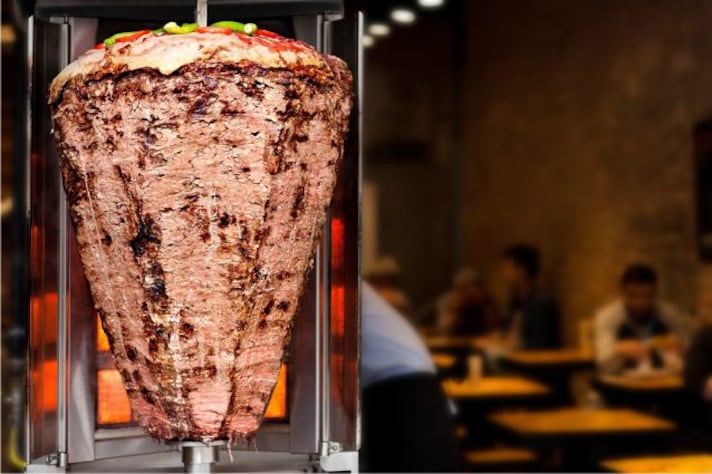
The döner kebab is the most famous version of the dish but then why is its nationality in quotes? It's easy to say: this version was born in the 70s thanks to Mehmet Aygün and Kadir Nurman, two boys who emigrated to Germany who changed the routes of world gastronomy. Yes, they are Turkish, but the döner kebab came to life and developed directly in Germany.
It is a very simple dish to prepare even at home, consisting of spiced lamb, beef or chicken that is cooked slowly, rotating around a vertical skewer. Precisely this last feature is the great innovation compared to the "predecessor kebabs": in Turkey the grill is prepared horizontally. Another great innovation that has allowed this dish to conquer the streets all over the world is its practicality: the two "inventors" were the first to put the kebab in a sandwich; at home the dish is served only and exclusively on the plate.
2. Cağ Kebab, the Father of Döner
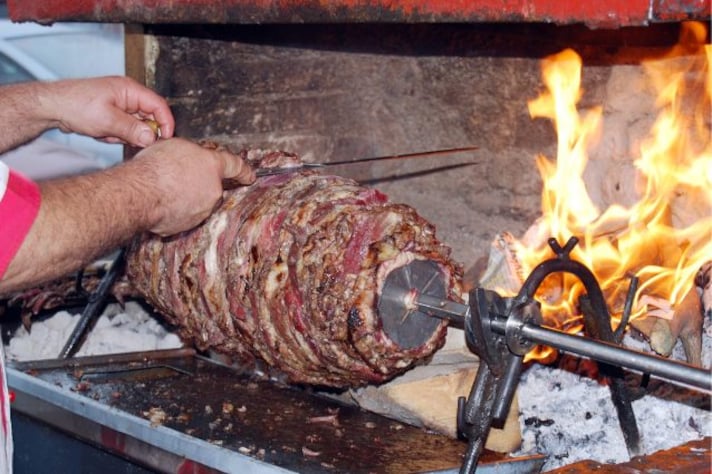
Before doner, how was kebab made then? With cağ, the typical specialty of central Turkey and the Caucasus. The meat, especially lamb and mutton, is marinated with a variety of spices and cut into strips directly from the skewer with a large, sword-like knife. However, cooking is horizontal, just as it happened in ancient times.
The product is served on a plate and not in a sandwich, with chopped onion, tomatoes and local green peppers. All the vegetables are grilled and accompanied by lavash, an ancient bread with Armenian origins, but also widespread in typical variations in Turkey and other countries, and which in this case is cooked in the tandoor.
3. Shawarms, the Middle Eastern Kebab
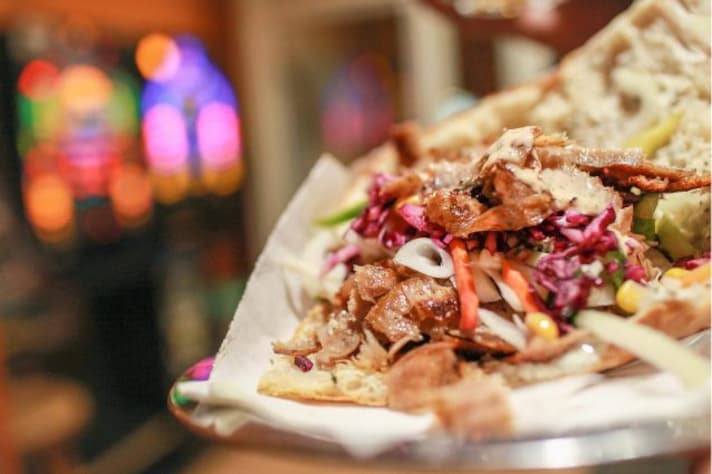
Shawarma is one of the common dishes of the Middle East. Similar to Greek gyros, as with the döner kebab which means "spinning kebab", in this case too we find ourselves faced with the same linguistic clarity: in Arabic shawarma translates as "to spin".
The meat is usually lamb but depending on the country in which it is cooked there are variations in beef, goat and/or chicken; whatever the animal, the marinade is always with coriander, cinnamon and cloves. It is cooked for a long time on a vertical skewer, then cut into strips and served as a filling for khubz, a typical very flat, undercooked flat bread, similar to Italian piadina and Mexican tortilla.
The toppings are also very good: chickpea hummus, tabbouleh, a typical Lebanese salad, fattoush salad, a preparation made with countless vegetables, or with pickled mango.
4. Beyti, the Kebab from Turkey's Most Famous Restaurant
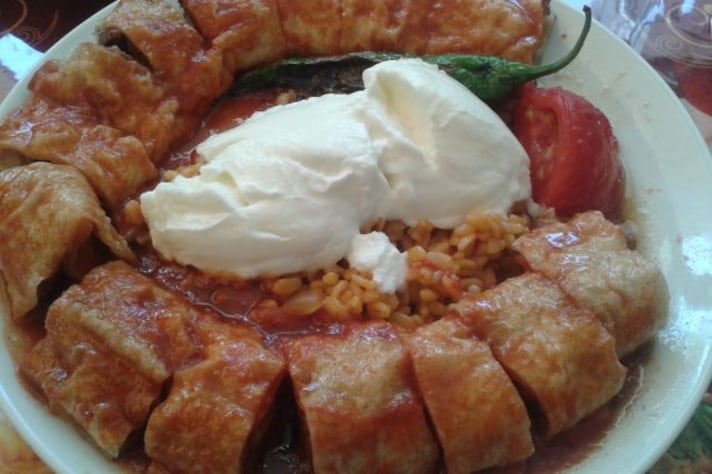
This type of kebab is written with a capital letter because it comes from a person's name, Beyti Güler, owner of the restaurant of the same name. His restaurant in Istanbul is the most famous in the nation and specializes in all types of grilled meat, to be cooked strictly on oak wood.
It is probably thanks to this restaurant that the kebab became a famous dish all over the world: in 1965 a correspondent from the New York Herald Tribune spoke about this address, making it very famous in the United States. The following year, Pan America, the most important airline in the United States, entrusted the European catering of scheduled flights to this restaurant and, during Richard Nixon's first visit to Europe, Beyti kebab was served on board of the controversial president's Air Force One. Even today, during visits by heads of state, diplomats or ministers, a stop in this restaurant is a traditional and fundamental stop.
The funny thing is that Beyti didn't serve kebabs for its first 20 years of business, it only got there much later and only thanks to a Swiss butcher. In 1961 Beyti Güler flew to Switzerland for pleasure and met Mr. Möller, a very famous butcher of the time. Upon returning home he decided to propose the cuts he learned in the Alps to the restaurant. So how is Beyti kebab made? It is a dish consisting of roasted lamb fillets wrapped in strips of lamb cutlet fat, served with rice, tomato, tomato paste, green chilies and yogurt.
5. The Testi, the Amphora Kebab
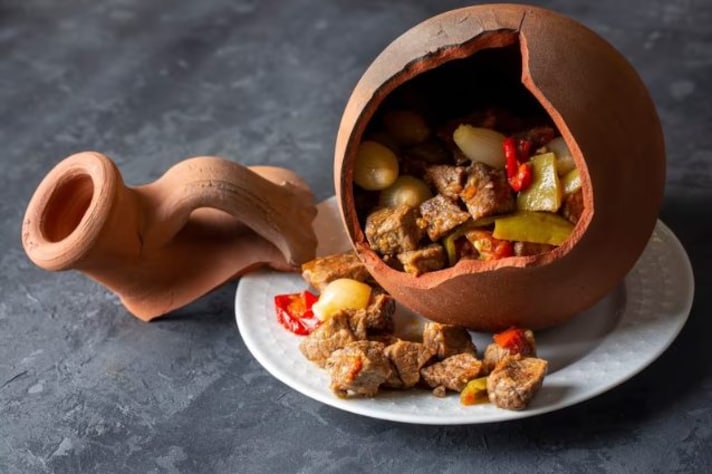
Testi kebab is a traditional variety of kebab from Anatolia and the Black Sea region of Turkey. It is also called "earthenware kebab" because this dish is very particular: the meat and vegetables are cooked together in a clay pot sealed clay. The seal is broken directly at the table, revealing the succulent and fragrant contents: a preparation deeply linked to the place it represents, because the Cappadocia area is famous for the production of ceramics, the "testi".
This type of kebab is prepared with diced lamb, shallots, tomatoes, garlic, long green pepper, black pepper, butter and tomato paste. The ingredients are all placed at the time into the clay pot which is subsequently sealed and placed in the tandoor oven. After half an hour the seal is pierced to create an atmosphere, as if it were a pressure cooker. Cooking is very slow, ranging from an hour and a half to three hours, depending on the thickness of the jar.
8. The Shish Kebab, the Version on The Skewer
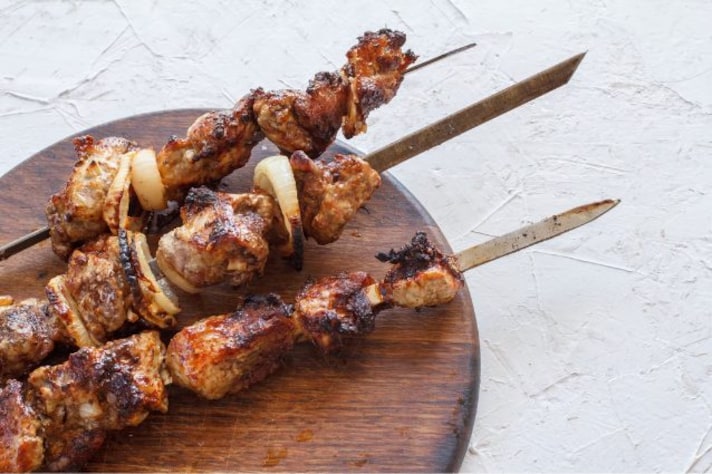
Even in this case the name helps us a lot: in Turkish "şiş" means cooking on a spit. Very famous and widespread throughout the world thanks to its simplicity, the shish kebab recipe includes lamb, chicken or beef cut into cubes and previously marinated with oil, lemon juice and spices. The pieces are then skewered on the skewer together with grilled peppers and onions. Traditionally the dish is served together with white rice and grilled vegetables. A peculiarity of shish kebab is that in the maritime areas it is cooked with swordfish, a truly exquisite dish.
The most suitable sauces to accompany shish kebab are babaganoush, a sauce made with eggplants' cream, flavored with mint and tahini, but also labneh, a sauce made with Greek yogurt, extra virgin olive oil, chopped mint, lime juice, salt and pepper. You can then also enjoy your shish kebab with tzatziki sauce, the typical Greek preparation made with yogurt, cucumbers, extra virgin olive oil, garlic and salt.
7. Chelow Kebab, the Iranian National Dish
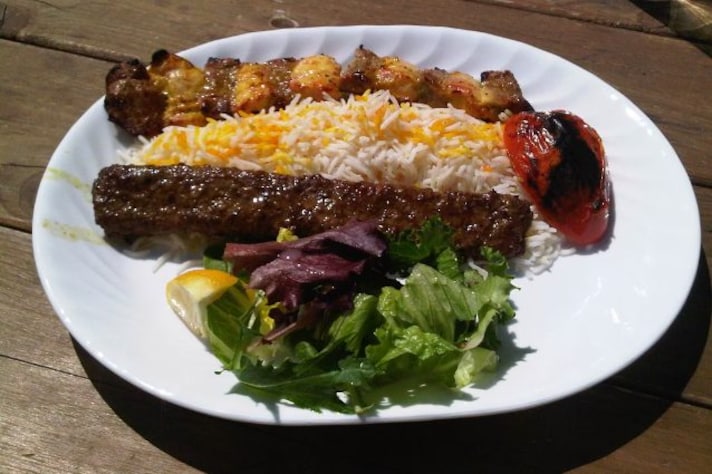
This is the Iranian national dish and, unlike the other kebabs found so far, the name does not refer to the cooking method, but to the main ingredient: rice. In Iran this type of meat grilled on a rotisserie is a "side dish" for čelow, steamed rice. Its history is very ancient and it was born at the time of the Qajar dynasty, in 1700.
Chelow kebab is served with accompaniments such as butter, sumac powder (a plant that was first planted in Sicily in Italy), basil, onions and grilled tomatoes. There is also a traditional accompanying drink, doogh, a drink made from yogurt and carbonated water.
In the old traditional bazaars there is a liturgy in the service: first the rice and side dishes, then the kebab on a skewer followed by the lavash. The rice and bread are then placed on the skewer; the latter undergoes a very curious "process": the lavash is passed over the kebab, as if you wanted to make a slipper, so as to impregnate it with the meat juices.
8. Souvlaki and Gyros, the Kebab in Greece
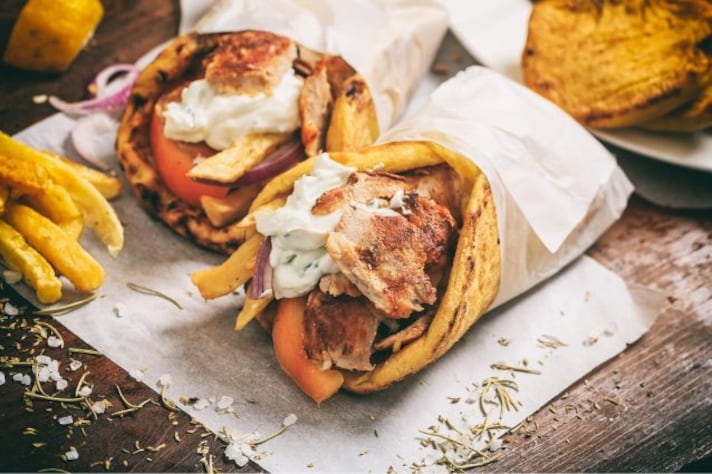
There are two main variations in Greece, those even mentioned by Homer in the Odyssey: the souvlaki and the gyros. Both dishes are also prepared in Macedonia and Cyprus, but Greece is certainly the nation of excellence for these kebab versions:
- souvlaki is cooked with pork or chicken. The traditional recipe requires marinating the meat for at least six hours with oil, white wine, pepper and fresh mint. The meat is cut into cubes and the latter can be served either on a skewer or on a plate, accompanied by a pita, tzatziki sauce and vegetables, usually lettuce, onion and tomatoes;
- the gyros is a direct descendant of the Turkish kebab because it seems to have been created by the immigrants who moved to Athens between the two world wars. It is very similar to döner kebab, but the gyros is prepared only with local ingredients and is served in the classic Greek pita. The meat also changes: pork is very rare in the kebabs of Middle Eastern countries due to the dietary precepts of the Islamic religion, while pork meat, marinated with aromatic herbs and cooked slowly, is used in gyros. Inside the pita we find Greek yogurt or tzatziki, tomatoes and onions.
9. The Shami (or Shaami), the "Pie" Kebab
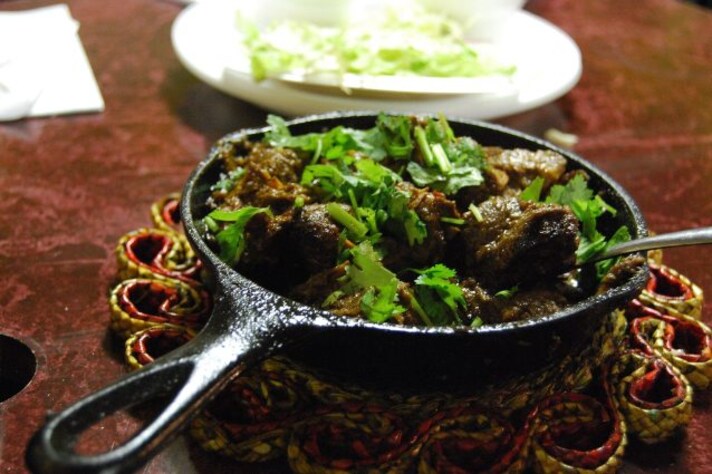
Shaami kebab is the typical dish of Pakistan and Bangladesh, it is also found in India, but the great richness of Indian cuisine overshadows this very particular dish. Unlike the other variations, this dish consists of patties the size of a Swiss rosti, made with minced meat, generally beef, chickpeas and eggs. It is considered an appetizer and is garnished with lemon juice, raw onions and salad greens.
The cooking method is also different: the meat is boiled together with chickpeas, spices, ginger, garlic and salt until everything softens. The meat is then shredded and shaped into round patties before being fried. As you can see from the photo, in Pakistan it is traditional to finish the dish in a pan and add various vegetables.
10. Kofta, the Meatball Kebab
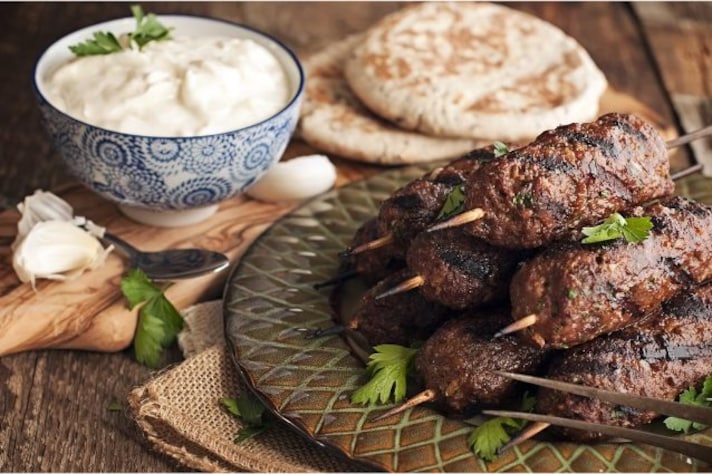
The kofta is exquisite and seems to have been born from the mind of some grandmother from Southern Italy, given its weight, but instead it is Turkish and Syrian: it is a kebab of meatballs, made with lamb meat cooked on the grill and seasoned with aromatic herbs, such as parsley and mint. The original kofta kebab recipe is very tasty and simple because the dish can also be cooked on non-stick pans; it is then served with white rice, Arabic bread or even just with a fresh green salad, perhaps accompanying it with tzatziki sauce.
This type of kebab can also be found in the Balkans, Bulgaria and Romania, where the meatballs are made from pork and are served with fried or baked chips. Romanian kofta is one of Bucharest's most beloved street foods.
;Resize,width=767;)

;Resize,width=712;)

